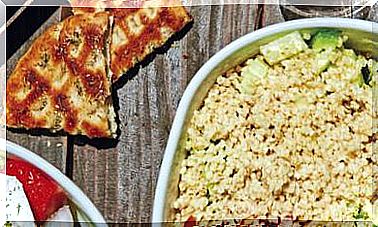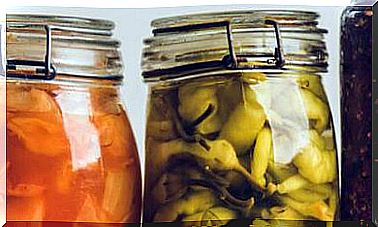How To Eliminate Hypersensitivity To Food?
When we consume a food to which we are intolerant, we do not experience such severe reactions and it is possible that the portion necessary for a food to trigger these symptoms is greater than that of an allergy

According to clinical studies, 7% of children under 5 years of age and 4% of adults suffer from food allergies.
This number seems a minority to us when we think about the large number of people who suffer discomfort after eating. This is because we confuse allergies with intolerances.
Who does not know a celiac? Who does not have a lactose intolerant in the family or among the group of friends?
Very few become allergic while many are intolerant to some foods.
What is the difference between an allergy and an intolerance?
The difference between these two conditions is that eating just traces of a food to which you are allergic can cause serious immune reactions throughout the body, from vomiting, cramps, fever, burning throat and even partial or total obstruction of the airways.
When we consume a food to which we are intolerant, we do not experience such severe reactions and it is possible that the portion necessary for a food to trigger these symptoms is greater than that of an allergy.
For example, in many schools parents are already forbidden to prepare breakfasts to take their children that contain nuts, especially peanuts and derivatives (although technically it is a legume) since a minimum exposure to it can trigger a severe reaction in a child allergic.
On the other hand, a child intolerant to cow’s milk may consume certain amounts of milk in buns or cookies and not experience any symptoms.
Now, when they consume a higher amount of dairy they may experience gastrointestinal pain, joint pain, mucus or other discomfort.
Symptoms of intolerance
The symptoms of suffering from an intolerance may be less clear than those of an allergy, since they can appear slowly or even be related to other factors. Some of these symptoms are:
- Headaches (even migraines)
- Mood swings and irritability
- Gastrointestinal discomfort
- Reflux
- Generalized inflammation of the body
- Fluid retention
- Autoimmune diseases
- Joint and muscle pain
- Fatigue
- Weight gain or difficulty losing weight
- Skin disorders
Most common allergens
Most allergies, almost 90% of them, are caused by just 8 different food groups:
- Milk and derivatives
- Eggs
- Nuts
- Peanuts
- Gluten
- Soy
- Shellfish
- Fish
In this case, total contact with this food should be avoided, to the point of avoiding other food groups that have been processed or cooked in facilities where potentially allergenic foods have been handled.
This, sometimes minute, cross-contamination can be the trigger for a serious autoimmune reaction and that is why the food industry is obliged to put phrases such as “made in a facility where nuts are also processed” or “may contain traces on its label. of allergens such as: gluten, milk, soy ”.
Foods that create allergies can also create hypersensitivity in addition to other foods that contain high amounts of histamines such as alcohol, smoked meats or fish, cheeses, vinegars, or others such as cocoa, coffee, and fruits such as kiwi, banana or strawberries.
Nor can I overlook food additives. These do produce serious imbalances within the body, because they are anti-natural ingredients, which can even act as neurotoxic agents within the body.
To list a few I will mention the famous monosodium glutamate (MSG), aspartame, benzonate, high fructose corn syrup and other artificial flavorings, preservatives and colorants.
Celiac disease – Gluten Intolerance
Celiac disease is an autoimmune imbalance caused by an intolerance to gluten, a protein found in cereals such as wheat, barley and rye).
When people with celiac disease consume these foods, they provoke an autoimmune response that damages the villis (intestinal villi) of the small intestine.
This villis have a very important role in the absorption of nutrients from the food we eat, and as these are more damaged, there is a greater risk of suffering from malnutrition.
Fortunately, however, this damage can be reversed by following a clean diet rich in probiotics.
How to eliminate hypersensitivity to food?
Having adverse reactions to certain foods takes us energy, makes us feel very vulnerable and does not allow us to radiate our greater vitality and beauty.
So here are some tips to remember that can help you win the battle:
- Eliminate processed “foods”: focus your diet on products of plant origin.
- Eliminate milk and derivatives.
- Avoid gluten: use cereals like quinoa, amaranth, millet or brown rice.
- Avoid peanuts and cashews: two foods with a high allergenic index and risk of contamination by fungi.
- Eliminate the nuts: for 2 weeks and reintroduce them little by little observing the reaction of your body. If you experience negative symptoms, permanently remove them from your diet.
- Avoid vinegars (apple cider vinegar is an exception).
- If you consume animal protein that is from organic farming, without the use of antibiotics or growth hormones.
- Follow the Eat Clean philosophy , a style of eating that eliminates allergens and helps purify the body.
Following these steps can help you feel and look your best. You may finally be able to eliminate that unbearable belly fat and end many of the symptoms of hypersensitivity.
Following a cleansing diet rich in probiotics, the immune system will be strengthened and your body will heal, and you will even see how plant foods to which you were intolerant before now no longer cause you any problems.
References:
Mayo Clinic: Diseases and Conditions. Food Allergies.









